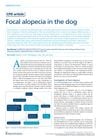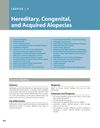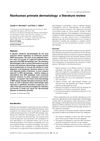Approach to Alopecia in Dogs in Clinical Practice
July 2025

TLDR Alopecia in dogs requires identifying the cause for effective treatment.
Alopecia in dogs is a complex condition with various causes, including infectious agents, endocrine disorders, and genetic abnormalities. The condition can manifest as focal or multifocal hair loss, with symmetrical or asymmetrical patterns providing diagnostic clues. Common causes include bacterial folliculitis, dermatophytosis, demodicosis, and hormonal imbalances like hypothyroidism and hyperadrenocorticism. Congenital forms, such as ectodermal dysplasia, are breed-specific and diagnosed through skin biopsy. Treatment is tailored to the cause and may involve antiparasitic, antimicrobial, hormonal, and palliative therapies. A thorough clinical history and targeted diagnostics are crucial for effective management and prognosis.





